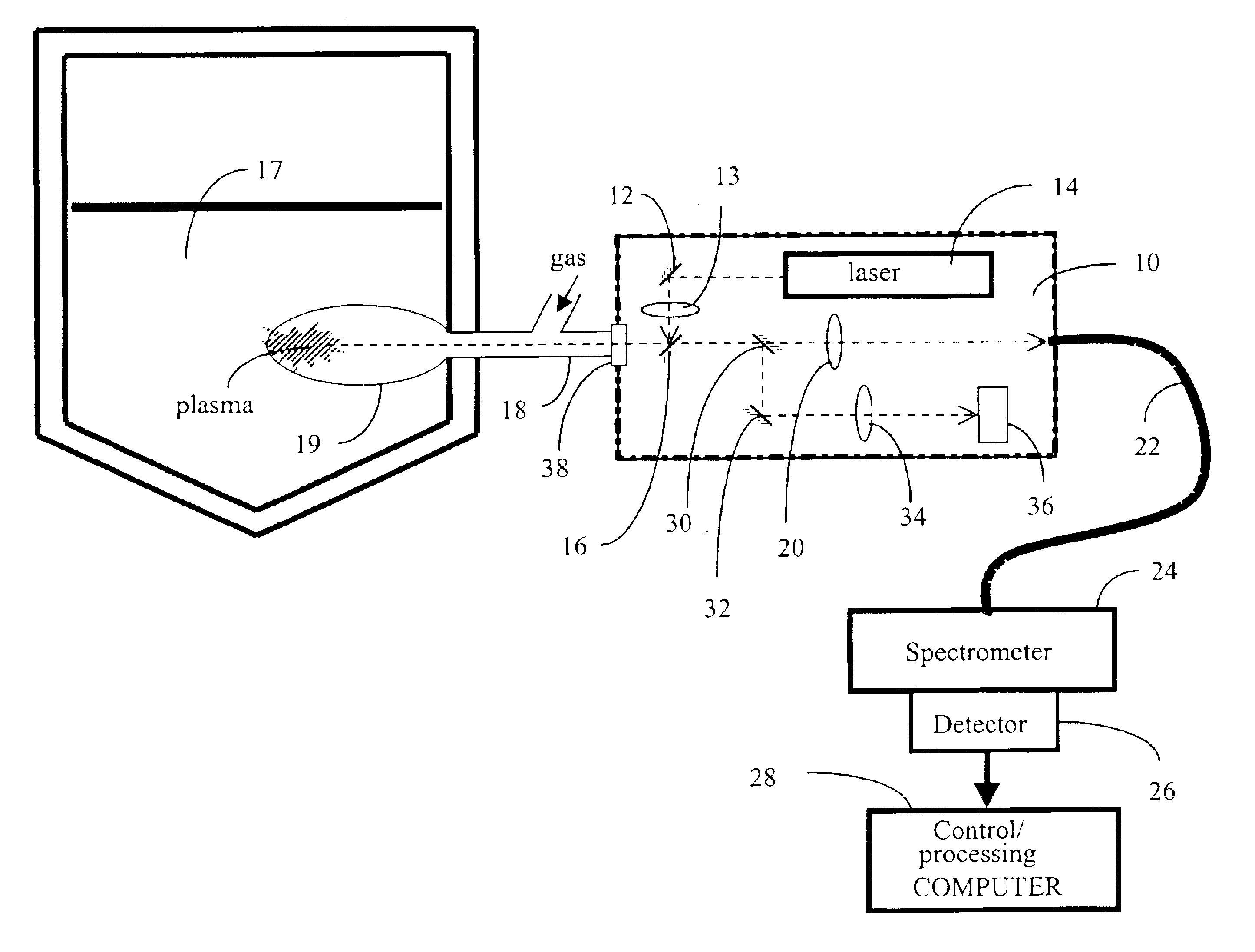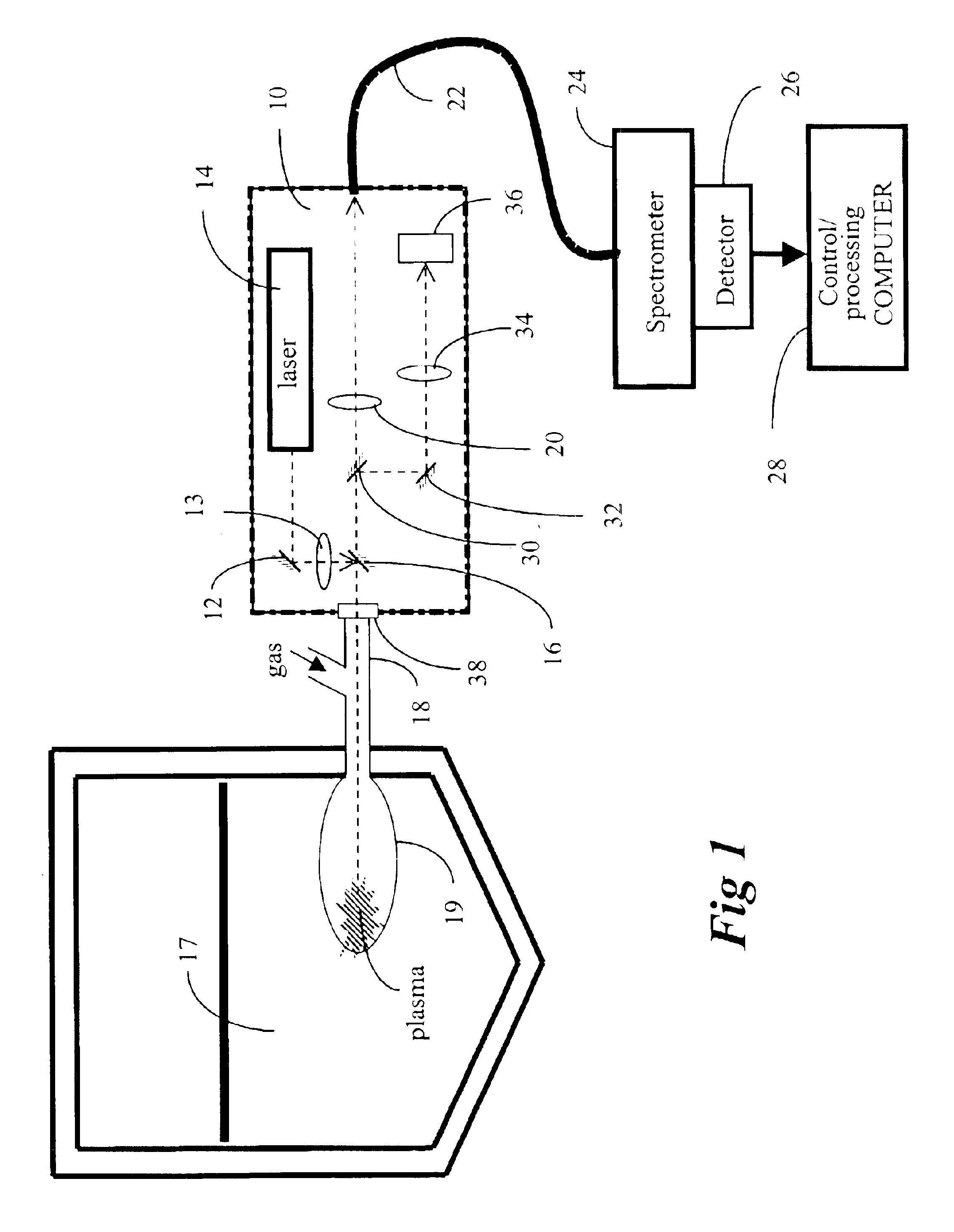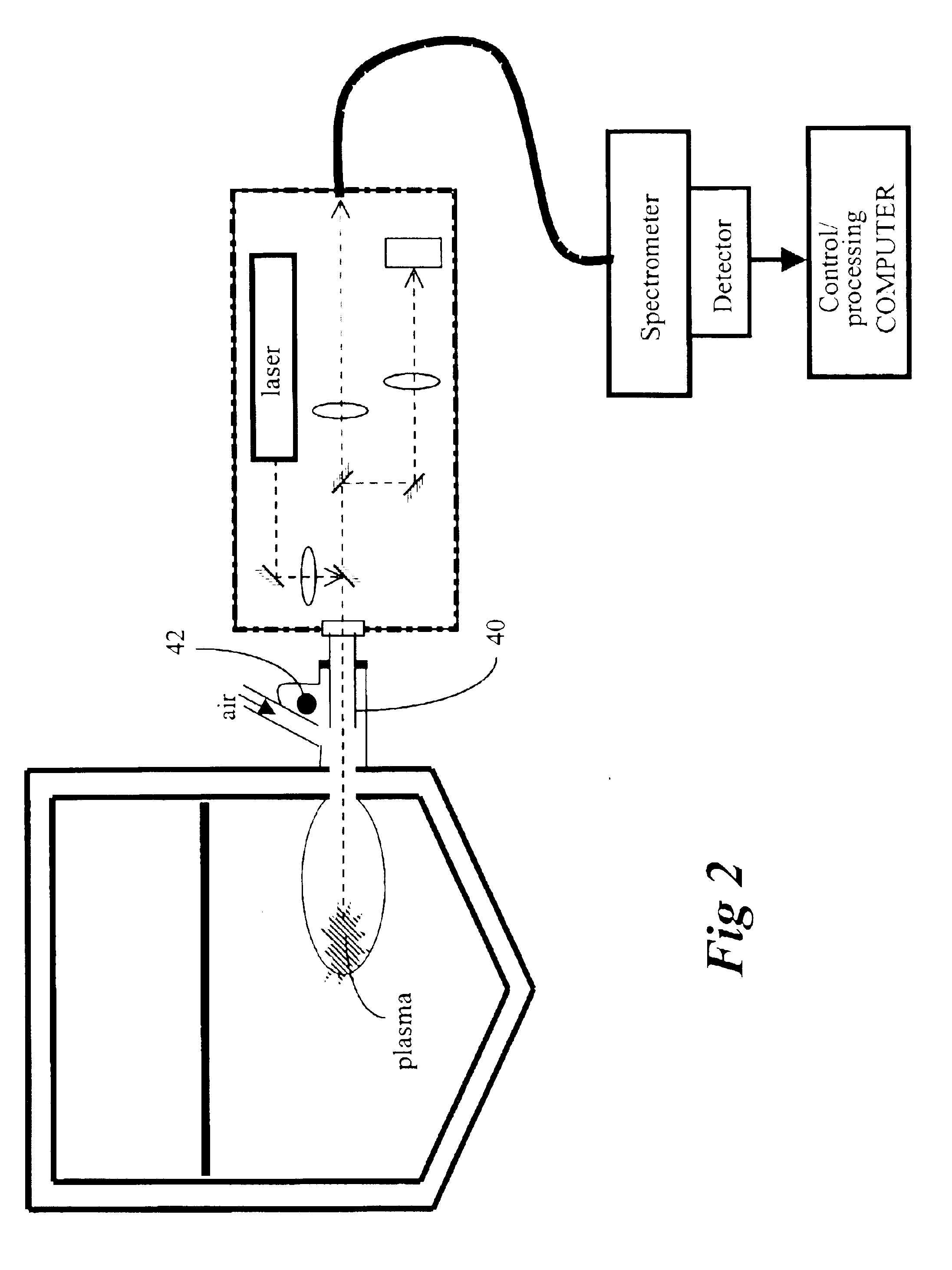Method and apparatus for molten material analysis by laser induced breakdown spectroscopy
- Summary
- Abstract
- Description
- Claims
- Application Information
AI Technical Summary
Benefits of technology
Problems solved by technology
Method used
Image
Examples
Embodiment Construction
[0038]In one of its embodiments, a LIBS probe of the present invention comprises a tube to gain access to the molten material by blowing appropriate gas through that tube, means for conveying radiation emitted by the thus excited plasma to a spectrometer, and means for detecting and analyzing radiation characteristic of elements present in the liquid.
[0039]FIG. 1 is a schematic illustration of the apparatus according to one embodiment of the present invention. The individual components shown in outline or designated by blocks in these figures are all well-known in the LIBS arts, and their specific construction and operation are not critical to the operation or best mode for carrying out the present invention. The probe 10 includes a first mirror 12 that reflects a laser pulse from a laser source head 14 to a focusing lens 13. The second (dichroic) mirror 16 reflects the laser pulse to the surface of molten material 17 through a quartz window 38 and a tube 18 in which gas is blown at...
PUM
| Property | Measurement | Unit |
|---|---|---|
| Pressure | aaaaa | aaaaa |
| Angle | aaaaa | aaaaa |
| Composition | aaaaa | aaaaa |
Abstract
Description
Claims
Application Information
 Login to View More
Login to View More - R&D
- Intellectual Property
- Life Sciences
- Materials
- Tech Scout
- Unparalleled Data Quality
- Higher Quality Content
- 60% Fewer Hallucinations
Browse by: Latest US Patents, China's latest patents, Technical Efficacy Thesaurus, Application Domain, Technology Topic, Popular Technical Reports.
© 2025 PatSnap. All rights reserved.Legal|Privacy policy|Modern Slavery Act Transparency Statement|Sitemap|About US| Contact US: help@patsnap.com



